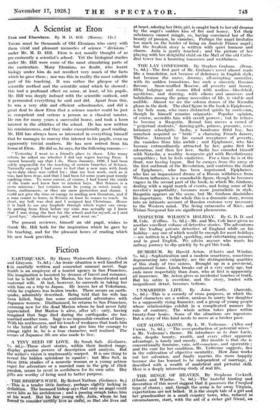THE LAY CONFESSOR. By Stephen Graham. (Bern. 7s. 6d.)—The first
part of Mr. Graham's novel almost reads like a translation, not because of deficiency in English style, but because the naïve, dreamy, all-accepting narrative, with its sudden transitions, has such a sincerely . Russian flavour. Snow-muffled Moscow, all poverty and luxury, filthy lodgings and rooms filled with azaleas—bloodshea, mysticism, and dancing, with eikons and samovars and balalaikas among the prime necessities of life, is visible and audible. Almost we see the solemn domes of the Kremlin gleam in the dark. The chief figure in the book is EpiphanoV, a lay holy man, who cures distracted spirits by confession, though he himself remains enigmatic. Popular opinion, of course, accredits him with occult powers ; but he refuses to become a Rasputin. Round him moves a crowd of " perpetual students," dancing-girls, princes, peasants, revo- lutionary schoolgirls. Sasha, a handsome fitful boy, has somehow acquired as " bride " a charming French dancer, Therese. Annoyed by his casual acceptance of poverty, she vanishes from him awhile ; and Epiphanov, who has become extraordinarily attracted by her, gains first her adoration, and then her love. Sasha has consoled himself with Natasha, a wealthy bourgeoise girl with Revolutionary sympathies ; but he 'feels vindictive. For a time he is at the front, war having begun. But he escapes from the army at the first outbreak of the Revolution, and contrives the death of Epiphanov, who has been imprisoned. Epiphanov, who has an impassioned dream of a Russia withdrawn from Western influences, is a remarkable figure, though he becomes vaguer in the second part of the book, in which Mr. Graham, dealing with a rapid march of events, and losing some of his novelist's impartiality, becomes more journalistic in style. Rasputin appears on the scene, but Mr. Graham diminishes his importance. On the whole this is a dramatic story, woven into an intimate account of Russian customs very necessary to the Western mind. The living catacombs of Kiev, and Nishni-Novgorod fair are significant phenomena.






































 Previous page
Previous page